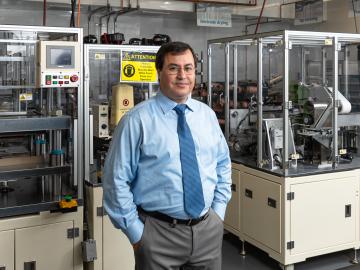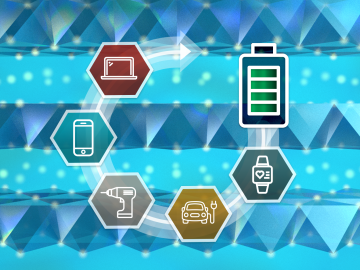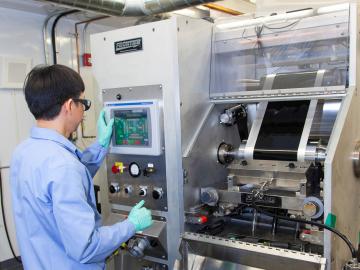
Filter News
Area of Research
- (-) Energy Science (34)
- (-) Isotopes (18)
- (-) Neutron Science (12)
- Biological Systems (1)
- Biology and Environment (33)
- Biology and Soft Matter (1)
- Computational Biology (1)
- Fusion and Fission (4)
- Materials (15)
- Materials for Computing (2)
- National Security (9)
- Nuclear Science and Technology (2)
- Supercomputing (31)
News Type
News Topics
- (-) Biomedical (14)
- (-) Energy Storage (24)
- (-) Isotopes (16)
- (-) Security (4)
- (-) Space Exploration (4)
- 3-D Printing/Advanced Manufacturing (27)
- Advanced Reactors (2)
- Artificial Intelligence (6)
- Big Data (2)
- Bioenergy (13)
- Biology (7)
- Biotechnology (1)
- Buildings (14)
- Chemical Sciences (5)
- Clean Water (5)
- Composites (2)
- Computer Science (13)
- Coronavirus (11)
- Critical Materials (1)
- Cybersecurity (5)
- Environment (23)
- Fossil Energy (2)
- Grid (14)
- High-Performance Computing (3)
- Hydropower (1)
- Machine Learning (3)
- Materials (11)
- Materials Science (13)
- Mathematics (2)
- Mercury (1)
- Microelectronics (1)
- Microscopy (3)
- Nanotechnology (4)
- National Security (3)
- Neutron Science (56)
- Nuclear Energy (5)
- Partnerships (4)
- Physics (1)
- Polymers (2)
- Quantum Computing (1)
- Quantum Science (2)
- Simulation (1)
- Summit (4)
- Transportation (21)
Media Contacts

Ilias Belharouak is leading ORNL’s research efforts in investigating new materials for solid-state batteries, which can double the charging capacity of lithium-ion batteries, commonly used today for electronic devices such as cell phones.

A versatile class of flexible, protein-like polymers could significantly advance future drug delivery methods. But first, scientists have to develop a reliable process for tailoring these polymers into shapes that can effectively transport medicines throughout the human body.

Biological membranes, such as the “walls” of most types of living cells, primarily consist of a double layer of lipids, or “lipid bilayer,” that forms the structure, and a variety of embedded and attached proteins with highly specialized functions, including proteins that rapidly and selectively transport ions and molecules in and out of the cell.

The formation of lithium dendrites is still a mystery, but materials engineers study the conditions that enable dendrites and how to stop them.

Two of the researchers who share the Nobel Prize in Chemistry announced Wednesday—John B. Goodenough of the University of Texas at Austin and M. Stanley Whittingham of Binghamton University in New York—have research ties to ORNL.

Ionic conduction involves the movement of ions from one location to another inside a material. The ions travel through point defects, which are irregularities in the otherwise consistent arrangement of atoms known as the crystal lattice. This sometimes sluggish process can limit the performance and efficiency of fuel cells, batteries, and other energy storage technologies.

The use of lithium-ion batteries has surged in recent years, starting with electronics and expanding into many applications, including the growing electric and hybrid vehicle industry. But the technologies to optimize recycling of these batteries have not kept pace.
![Coexpression_hi-res_image[1].jpg Coexpression_hi-res_image[1].jpg](/sites/default/files/styles/list_page_thumbnail/public/Coexpression_hi-res_image%5B1%5D_0.jpg?itok=ww635BCP)
While studying the genes in poplar trees that control callus formation, scientists at Oak Ridge National Laboratory have uncovered genetic networks at the root of tumor formation in several human cancers.

To learn more about interactions between drug molecules and micelles, Associate Professor Megan Robertson and graduate students Tyler Cooksey and Tzu-Han Li from the University of Houston (UH) are using neutrons at the Department of Energy’s (DOE’s) Oak Ridge National Laboratory (ORNL).

Oak Ridge National Laboratory scientists have developed a crucial component for a new kind of low-cost stationary battery system utilizing common materials and designed for grid-scale electricity storage. Large, economical electricity storage systems can benefit the nation’s grid ...


